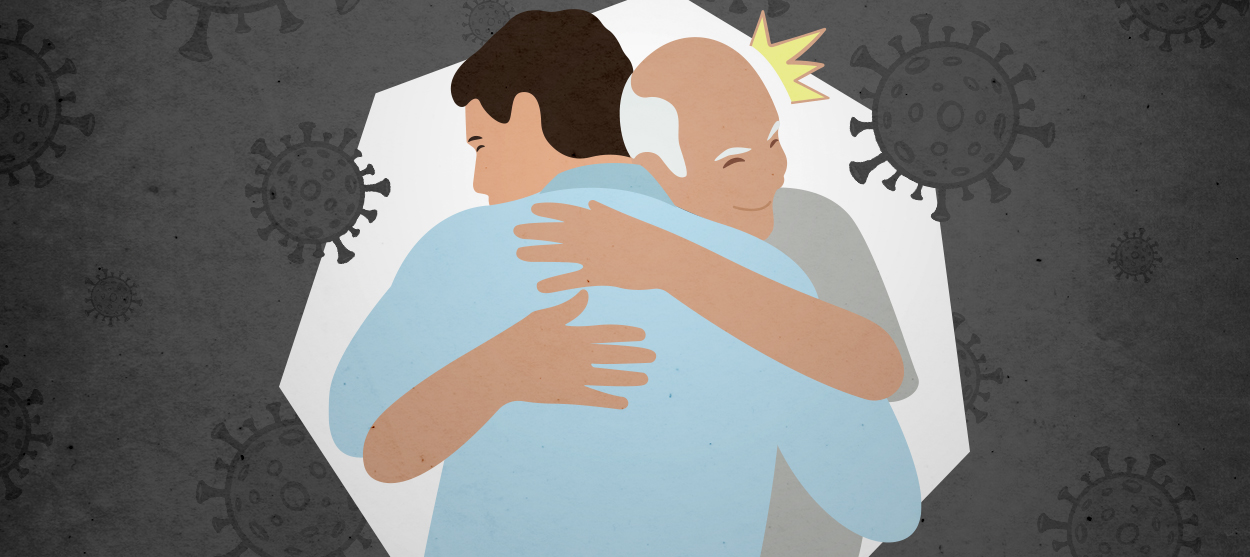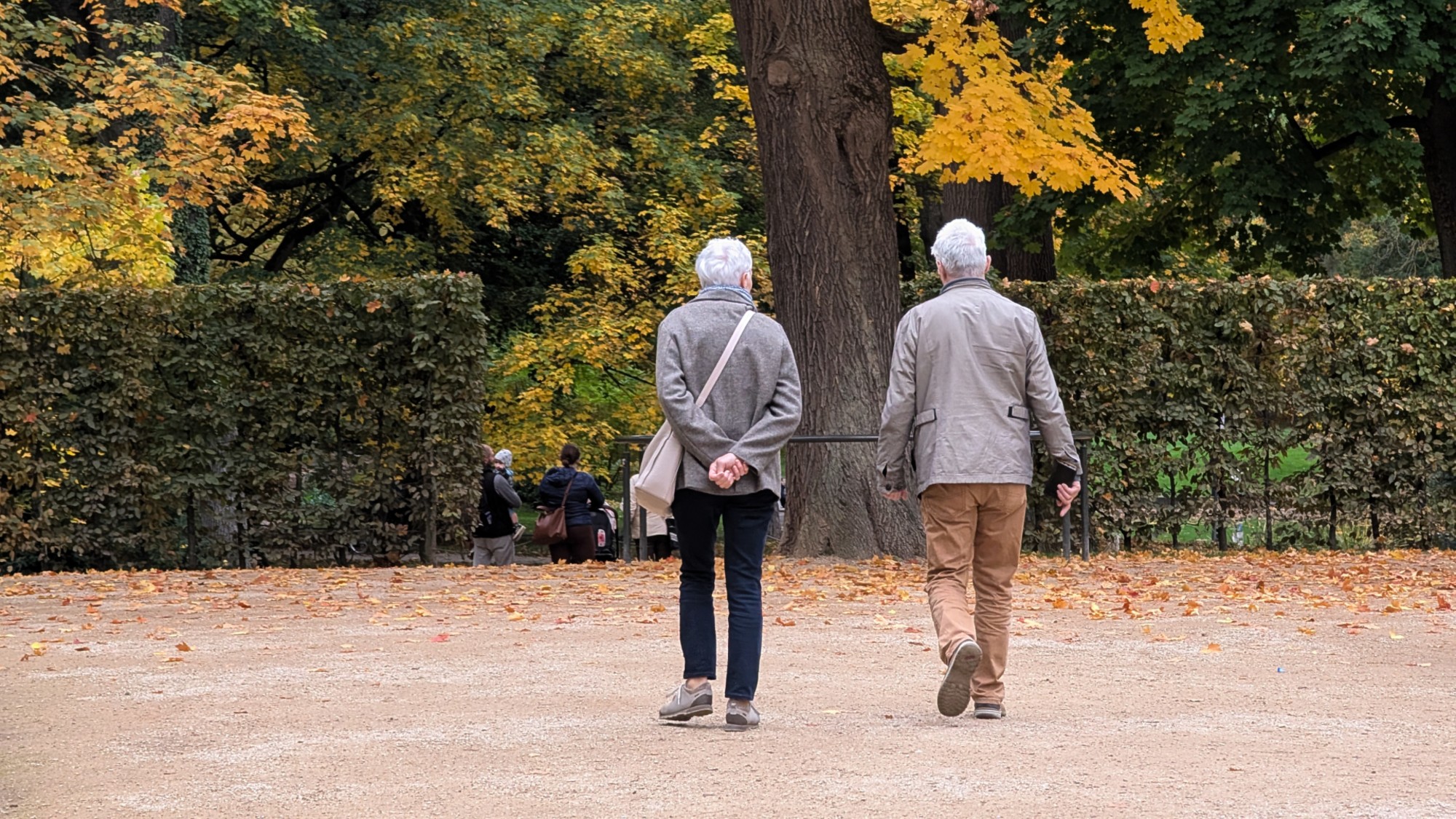Reopen nursing homes
Why are vaccinated residents still living on lockdown?


Consider how far nursing homes have come.
Uniquely vulnerable to COVID-19, elder care facilities were devastated by the outbreak of the pandemic, accounting for about a third of all deaths from the virus in the United States. But today, cases and deaths at nursing homes have plunged — and it's not hard to understand why. While a third of American adults are fully vaccinated, and another fifth are partially vaccinated, more than 75 percent of nursing home residents and 50 percent of staff are fully vaccinated as of mid-April. Meanwhile, rapid testing, treatment options, and personal protective equipment are available in a way they weren't a year ago to keep safe residents who can't be vaccinated or haven't yet completed their doses. We also know far more about varying risks of viral spread.
So why are so many nursing home residents still living on lockdown?
The Week
Escape your echo chamber. Get the facts behind the news, plus analysis from multiple perspectives.

Sign up for The Week's Free Newsletters
From our morning news briefing to a weekly Good News Newsletter, get the best of The Week delivered directly to your inbox.
From our morning news briefing to a weekly Good News Newsletter, get the best of The Week delivered directly to your inbox.
Across the country, pandemic restrictions on nursing home life are slowly beginning to loosen. But "the mandatory social isolation of residents remains largely in place," reports the Hastings Center, a nonpartisan bioethics research institute and think tank. That's so even though "it is no longer clear that the benefit of continued restrictions outweighs the harm." Though well-intended — and sensible under the very different pandemic conditions we faced last spring — these restrictions on residents' social life cannot linger beyond necessity. It's cruel. Nursing homes are often dismal places in ordinary times, and keeping them under strict social constraints a moment too long is outright abusive.
The ongoing pandemic restrictions the Hastings Center describes go well beyond mask use, routine testing, and quarantine those who contract COVID-19. Here's a hypothetical from the report:
Consider an 85-year-old nursing home resident with dementia who is fully vaccinated and asymptomatic, but is required to isolate in her room after an asymptomatic staff member tests positive. With current restrictions in place, even having been vaccinated against COVID, she is not allowed to visit a neighbor or participate in a music program with other nursing homes residents. The social isolation and the disruption of her routine is traumatic, causing increased anxiety, despair, and worsening confusion. She stops eating and drinking, facing a risk of dehydration and serious illness. These are preventable harms caused not by COVID-19, but by the regulatory response to it. [The Hastings Center]
If this same woman were receiving home care, the Hasting Center observes, she would not be confined. Current Centers for Disease Control (CDC) guidance would let her live a near-normal life at home. She could see fully vaccinated friends and family at will and unvaccinated people one household at a time, and she could do so unmasked and indoors.
In the nursing home, however, she'll be subject to more isolating policies at the direction of the Centers for Medicare & Medicaid Services (CMS). "It is so great that your mom, dad, or other loved ones have received their COVID-19 vaccine," begins a patronizing flyer CMS published in March. "If your loved one is fully vaccinated, they can choose to have close contact (including touch) with you as long as they are wearing a well-fitting face mask." That's miles better than FaceTiming or shouting through a closed window — but again, if our hypothetical 85-year-old lived at home, she could have that same visit without the mask.
A free daily email with the biggest news stories of the day – and the best features from TheWeek.com
The CMS flyer gives two reasons for keeping these strict rules in place. One is that "although a vaccinated person may not 'feel' sick from COVID-19, they could be infected and/or spread the virus to others." This is technically true but severely misleading. After full vaccination, the risk of infection and transmission is incredibly small, as CDC data published last week showed. The agency reported 5,800 infections among 66 million fully vaccinated people (0.008 percent), and the infections were mostly mild or asymptomatic.
"If you're vaccinated," explains David Leonhardt at The New York Times, "COVID presents a minuscule risk to you, and you present a minuscule COVID risk to anyone else. A car trip is a bigger threat, to you and others. About 100 Americans are likely to die in car crashes today. The new federal data suggests that either zero or one vaccinated person will die today from COVID." As has been the case throughout this pandemic, the risk will be higher for the elderly and infirm, i.e. nursing home residents. But "higher" by itself doesn't tell us anything; we need to ask: "Higher than what?" The answer here is "higher than miniscule," which is to say, still very small, in the range of risks we constantly deem acceptable in daily life.
The second reason the CMS flyer cites is that "[s]ome nursing home residents and staff are not vaccinated or haven't received their second doses. So, not everyone in a nursing home is protected from COVID-19 yet and could be infected by visitors." This is also true, but incomplete, and it raises two important points.
One is that, as the Hastings Center report observes, "[t]here is a middle ground between the strict isolation we see today and high-risk social contact." We can find that middle ground while the vaccine rollout continues, allowing residents who are vaccinated to move more quickly toward normalcy.
The other is related to reported vaccine hesitancy among nursing home staff. While staffers absolutely have a right to refuse vaccination for themselves, they don't have a right to lower residents' quality of life because of that decision. They don't have a right to make residents miserable, lonely, and scared in what may be their final days. It is neither compassionate nor fair to isolate residents because some staff refuse to get the vaccine.
Vaccinating nursing home residents, appropriately loosening rules, and incentivizing staff vaccination (as well as improving staff treatment and pay more generally) will do a lot to prevent that scenario. However, nursing homes should also be able to fire resident-facing workers who persistently refuse to be vaccinated (without medical excuse) if their choice precludes a return to normalcy for vaccinated residents.
"There is not a single dying human being who does not yearn for love, touch, understanding, and whose heart does not break from the withdrawal of those who should be drawing near," wrote British nurse Jennifer Worth in In the Midst of Life, a memoir of her experience with end-of-life care. For many residents, living in a nursing home is already a withdrawal. With vaccination rates on a promising trend, policymakers should take care to ensure outdated regulations don't keep them from the love, touch, and understanding they need.
Bonnie Kristian was a deputy editor and acting editor-in-chief of TheWeek.com. She is a columnist at Christianity Today and author of Untrustworthy: The Knowledge Crisis Breaking Our Brains, Polluting Our Politics, and Corrupting Christian Community (forthcoming 2022) and A Flexible Faith: Rethinking What It Means to Follow Jesus Today (2018). Her writing has also appeared at Time Magazine, CNN, USA Today, Newsweek, the Los Angeles Times, and The American Conservative, among other outlets.
-
 The UK’s best Christmas pantos
The UK’s best Christmas pantosThe Week Recommends Dive into the festive cheer, even into the new year, with some traditional favourites and modern twists
-
 The longevity economy is booming as people live longer
The longevity economy is booming as people live longerThe Explainer The sector is projected to reach $27 trillion by 2030
-
 Sudoku hard: December 11, 2025
Sudoku hard: December 11, 2025The daily hard sudoku puzzle from The Week
